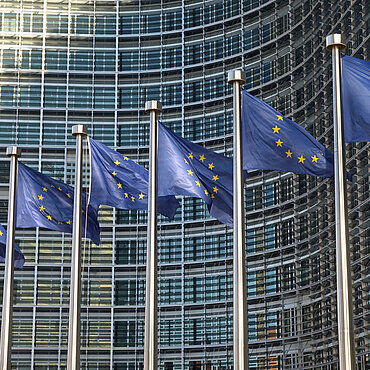Copyright protection for live streaming of sports broadcasts?
German Bundesliga broadcasts on the notebook via Sky Go, latest movies on the tablet PC with Netflix, or the latest music videos on YouTube on the smartphone while riding the train - it is taken for granted nowadays that TV and other moving images offers are accessible at any time and from any place. The legal systems, however, can hardly keep up with the extremely fast technical advancements around Web-TV and IPTV.
This applies in particular to copyright, which is supposed to offer protection to persons who are entitled to copyrights or related copyrights to such moving images content, such as directors, screenwriters, actors, film producers or broadcasting companies. In a judgment of 26 March 2015, the Court of Justice of the European Union (CJEU) dealt with several of the copyright issues which are currently being discussed in this context, although unfortunately the most pressing question in this regard remained unanswered.
Facts of the case
The judgment was in relation to a dispute between a Swedish pay TV station which broadcasts live ice hockey matches on its internet site and the operator of a website where hyperlinks to the live broadcasts of two ice hockey matches were offered (so-called deep links), circumventing the station’s paywall. The pay TV station immediately stopped the option to access the live broadcasts via the hyperlinks, and the operator of the website was subsequently found guilty of an infringement of the pay TV station’s copyrights in the first instance. The court of appeal, on the other hand, found that no part of the commentators’, camera crew’s or producers’ work on the broadcasts of the ice hockey matches, taken on its own merits, or some or all of those parts taken together, reached the originality required for copyright protection. But it would constitute an infringement of the pay TV station’s related copyrights to place deep links on its live streams, so that the sentence of the website provider was maintained on the merits. However, the Swedish supreme court (Högsta domstolen), which was then seized by the pay TV station, pointed out that the insertion of a hyperlink on a website would not constitute a public reproduction of the linked contents under European law. Moreover, Swedish national law would provide for wider related rights than the guidelines of Directive 2001/29 on the harmonization of particular copyright and related copyright aspects in the information society, by also subjecting works to the exclusivity right which are not just made available “upon request”.
Therefore, the supreme court stayed the proceedings and referred five presentation issues to the CJEU, four of which it withdrew after it was notified by the CJEU chancellor of the “Svensson” judgment, and only maintained the question whether the national lawmakers may grant broadcasting companies a more comprehensive copyright protection of their broadcasting shows than provided for by the legal framework of Directive 2001/29 (CJEU, judgment of 26 March 2015, C-279/13 - C More Entertainment).
The (partial) decision of the CJEU
The CJEU answered this question in such a way that the member states remain free to give wider protection to the exclusive right of broadcasting companies to live broadcasts on the internet beyond the guidelines of Directive 2001/29, insofar as copyright protection is not affected in this regard. Regarding the question as to whether the insertion of a clickable link on a website to a piece of work which was published by the owner of the rights can be qualified as a “public reproduction” within the meaning of Directive 2001/29 - a question which was not maintained for a preliminary ruling - the CJEU only pointed to its earlier “Svensson” judgment (decision of 13 February 2014, C-466/12). The CJEU had found there with regard to the linking of press articles that a link to a (literary) work which is freely accessible on a third party website - independent of the concrete type of connection (e.g. by way of framing) - does not constitute a public reproduction within the meaning of Directive 2001/29, unless the reproduction is not done using the same technical online procedure or is directed at a new audience - in contrast to the audience intended for the original reproduction by the producer. Since the pay TV station’s access control measures were circumvented in the present case, there readily was a public reproduction pursuant to Article 3 Para 1 of Directive 2001/29 within the meaning of this case law.
Due to the restrictive wording of the submission question, the CJEU neither had the option, nor a reason to comment concerning the court of appeal’s findings with regard to a lack of copyright protection of the ice hockey broadcast. Therefore, the general evaluation of the CJEU remains, that sports events are not copyright protected due to the lack of intellectual creation, in particular if the sports events broadcasts are subject to rules which do not leave any room for artistic license within the meaning of copyright, as was the case here. However, the CJEU did therefore not have to decide on whether modern, elaborate sports broadcasts with different camera positions and perspectives, commentaries, slow-motions, analyses, interviews or integration of music compositions of the organizer associations are to be assessed differently.
The CJEU only deals with the legal qualification of the live broadcast via the internet in view of the associated copyright of the broadcasting companies. Pursuant to Article 3 Para 2 Directive 2001/29, making such broadcasts publicly accessible as a subset of public reproduction requires that the respective protected item has to be made available to the public cumulatively from places as well as at times of their choice, as is the case for the typical video-on-demand offers. However, this is exactly not the case for the direct broadcasts on the internet that were the subject matter of the original proceedings, since they can only be accessed at fixed times. Such live streams therefore do not constitute a public access and therefore are not subject to the respective exclusivity right of the broadcasting companies from Article 3 Para 2 lit. d) Directive 2001/29. Since there is only a partial harmonization at the European level according to the findings of the CJEU, the Swedish lawmaker was entitled to give wider protection to the broadcasting companies.
Conclusion: Many questions remain unanswered
While the CJEU commented on some important issues, the conclusive clarification of the controversially discussed question remains whether the direct broadcasting of moving imagines on the internet is subject to the broadcasting right or the cable retransmission right. Therefore, calls for a technology-neutral design of the cable retransmission right by the lawmaker will not fall silent.
(CJEU, Ninth Chamber, judgment of 26 March 2015 – C-279/13)
Dr Christian Triebe, Attorney, Hamburg

Subscribe to our GvW Newsletter here - and we will keep you informed about the latest legal developments!




